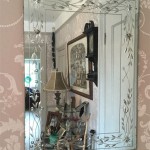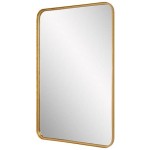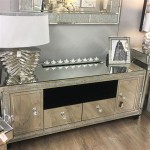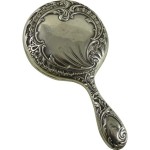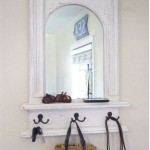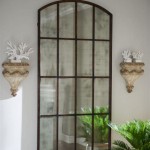Fogless Mirror: How Does It Work?
A fogless mirror, also known as an anti-fog mirror, remains clear even in humid environments where condensation typically forms on standard mirrors. This convenient feature is achieved through various methods, each employing principles of physics and material science to prevent or mitigate the fogging process.
Fogging occurs when warm, moist air comes into contact with a cooler surface. The water vapor in the air cools and condenses into tiny water droplets on the surface of the mirror, scattering light and creating the foggy appearance. Fogless mirrors prevent this by either warming the mirror surface to prevent condensation or by creating a hydrophilic surface that causes the condensed water to spread into a thin, transparent film.
One common method for achieving a fogless mirror is through internal heating. These mirrors contain a heating element, typically a thin, resistive film or pad, embedded behind the reflective surface. When activated, the heating element warms the mirror surface to a temperature slightly above the surrounding air's dew point. This temperature differential prevents water vapor from condensing on the mirror, keeping the surface clear.
The heating element can be powered in various ways, depending on the mirror's design and application. Some mirrors are hardwired into the building's electrical system, providing a constant and reliable source of power. Others utilize low-voltage transformers or battery packs, making them more portable and versatile. Still, others employ innovative solutions such as integrating the heating element with the bathroom lighting circuit, activating the heating element whenever the light is switched on.
Another approach to creating a fogless mirror utilizes a specialized coating applied to the mirror's surface. This coating is hydrophilic, meaning it attracts water molecules. Instead of forming discrete droplets that scatter light, the condensed water spreads evenly across the hydrophilic surface, creating a thin, transparent sheet of water. This thin film does not obstruct the reflection of light, allowing the mirror to remain clear.
Hydrophilic coatings are often formulated using materials like titanium dioxide or silica. These materials have a high affinity for water, effectively preventing the formation of fog. The durability and effectiveness of the coating depend on its composition and application method. High-quality coatings can maintain their fog-resistant properties for extended periods, even in frequently humid environments.
Some fogless mirrors combine both heating elements and hydrophilic coatings. This dual-action approach provides enhanced fog prevention, ensuring a clear reflection even under extreme conditions. The heating element quickly evaporates any condensed water, while the hydrophilic coating prevents droplets from forming in the first place. This combination offers a highly effective and reliable fogless solution.
While less common, some fogless mirror designs utilize ventilation systems. These systems circulate warm, dry air across the mirror's surface, preventing condensation by reducing the humidity in the immediate vicinity. This method is typically found in larger mirrors or specialized applications where other methods might be impractical.
Choosing the right fogless mirror depends on individual needs and preferences. Factors to consider include the size and location of the mirror, the frequency and intensity of humidity, and the availability of power sources. Heated mirrors offer reliable performance but require a power connection, while coated mirrors are simpler to install but might require periodic reapplication of the hydrophilic coating depending on the product.
The development of fogless mirror technology has significantly improved convenience and functionality in various settings. From bathrooms and automotive applications to medical and scientific instruments, fogless mirrors provide a clear and unobstructed view, regardless of environmental conditions. The ongoing advancements in materials science and engineering continue to refine and improve fogless mirror technology, promising even more effective and efficient solutions in the future.
Understanding the underlying principles and the various methods employed to achieve a fog-free surface allows for informed decisions when selecting and maintaining a fogless mirror. By addressing the fundamental cause of fogging – condensation – these technologies provide a clear reflection in even the most challenging environments.

5 Best Fogless Shower Mirrors Of 2024 Reviewed

How Anti Fog Led Bathroom Mirrors Can Do Wonders Is It Worth

Fog Free Shower Mirror Anti Manufacturer

Honeybull Shower Mirror Fogless Shaving Anti Fog

Fogless Shower Mirror For Shaving With Upgraded Suction Anti Fog Shat Mirrorvana Inc

Suction Fogless Mirror White Oxo Softworks Target

How To Keep Your Bathroom Mirror Fog Free The Creek Line House

Toolkiss 28 In W X 36 H Frameless Rectangular Anti Fog Led Light Bathroom Vanity Mirror With Backlit And Front Tk23605 The Home Depot

What Are The Benefits Of An Anti Fog Mirror Victoriaplum Com

Clear Mirror Fog Free Permanent Shower Mirrors Mounted

